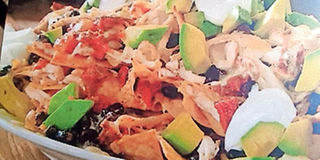What you wanted to know about food preservation

Like humans, micro-organisms need a source of food and water, a suitable pH and temperature to grow, so food preservation techniques aim to target these requirements. FILE PHOTO | NMG
What you need to know:
- Micro-organisms can be physically removed from food, or their numbers reduced, by washing, trimming, sieving and filtration.
- No food product is rendered free from micro-organisms by low temperature (freezing or refrigeration). This explains the danger of refreezing any kind of thawed foods.
- Drying or evaporation methods are applied to nearly every kind of watery food, including milk. The loss in vitamins and nutritional value is usually minor.
- There are several traditional ways of food preservation used at the household level that can be classified as chemical methods.
Food preservation involves a variety of techniques that allow food to be kept for extended periods without losing nutritional quality and curbs growth of unwanted micro-organisms.
Like humans, micro-organisms need a source of food and water, a suitable pH and temperature to grow, so food preservation techniques aim to target these requirements. The techniques include:
Prevention of contamination (aseptic technique)
This is the prevention of contamination of food by spoilage agents. The word ‘aseptic’ means free from harmful bacteria and viruses.
The technique requires either using an artificial covering for the food, or keeping its natural protective covering if there is one.
Examples of natural coverings are the shells of eggs, fat or skins in animals, and/or peel of fruits. Covering can prevent micro-organisms from entering or dropping into the food.
Removal or reduction of micro-organisms
Micro-organisms can be physically removed from food, or their numbers reduced, by washing, trimming, sieving and filtration.
For example, vegetables and fruit should be washed in clean water; any damaged or dirty parts of vegetables trimmed off with a clean knife while flour can be sieved to remove any unwanted contaminants.
The use of high temperature
Heat is one of the oldest methods of destroying micro-organisms in food processing and preservation. Food is rendered safe by the application of heat because most pathogenic micro-organisms are comparatively heat-sensitive.
Some of the methods of heat treatment used for food preservation include cooking or boiling, pasteurisation (a process of heat treatment of milk), blanching (mild pre-cooking) and canning (careful preparation of food packed into a sealed container that is subjected to defined high temperatures).
The use of low temperature
Cold is not an effective means of destroying pathogenic bacteria in foods, but it can retard their multiplication and metabolic activities.
No food product is rendered free from micro-organisms by low temperature (freezing or refrigeration). This explains the danger of refreezing any kind of thawed foods.
The most important pre-requisite for successful preservation through cold is that the food must be clean.
Drying
This is a dehydration process by which the water or moisture content of the food is removed or decreased. Pathogenic and other bacteria cannot multiply in the absence of water.
Drying or evaporation methods are applied to nearly every kind of watery food, including milk. The loss in vitamins and nutritional value is usually minor.
Fermentation
Not all micro-organisms are bad. Some of them are necessary in the preparation and preservation of many foods and beverages.
Essentially, fermentation (a controlled microbial action) is a process of anaerobic or partially anaerobic oxidation of carbohydrates that produce acids and alcohol.
The presence of acid or alcohol, creates unfavourable environmental conditions for undesirable bacteria. Foods commonly processed and preserved by fermentation are milk and milk products.
Chemical preservation
Chemicals incorporated into food for preservation purposes are ‘intentional additives’. Additives used at food industry level include vitamins, mould inhibitors, bactericides, emulsifiers, minerals, food colouring, synthetic flavours and sweeteners.
There are several traditional ways of food preservation used at the household level that can be classified as chemical methods.
Substances such a sugar, salt, vinegar, spices and woodsmoke are generally regarded as safe and natural preservatives.
Salting (the addition of salt to food for the purpose of preservation), sugaring (action of sugar in food preservation) and smoking (one of the oldest methods used to improve the quality of food and commonly used to preserve meat and fish) are all methods of curing foods.
The writer is based at the Department of Human Nutrition, Egerton University.




